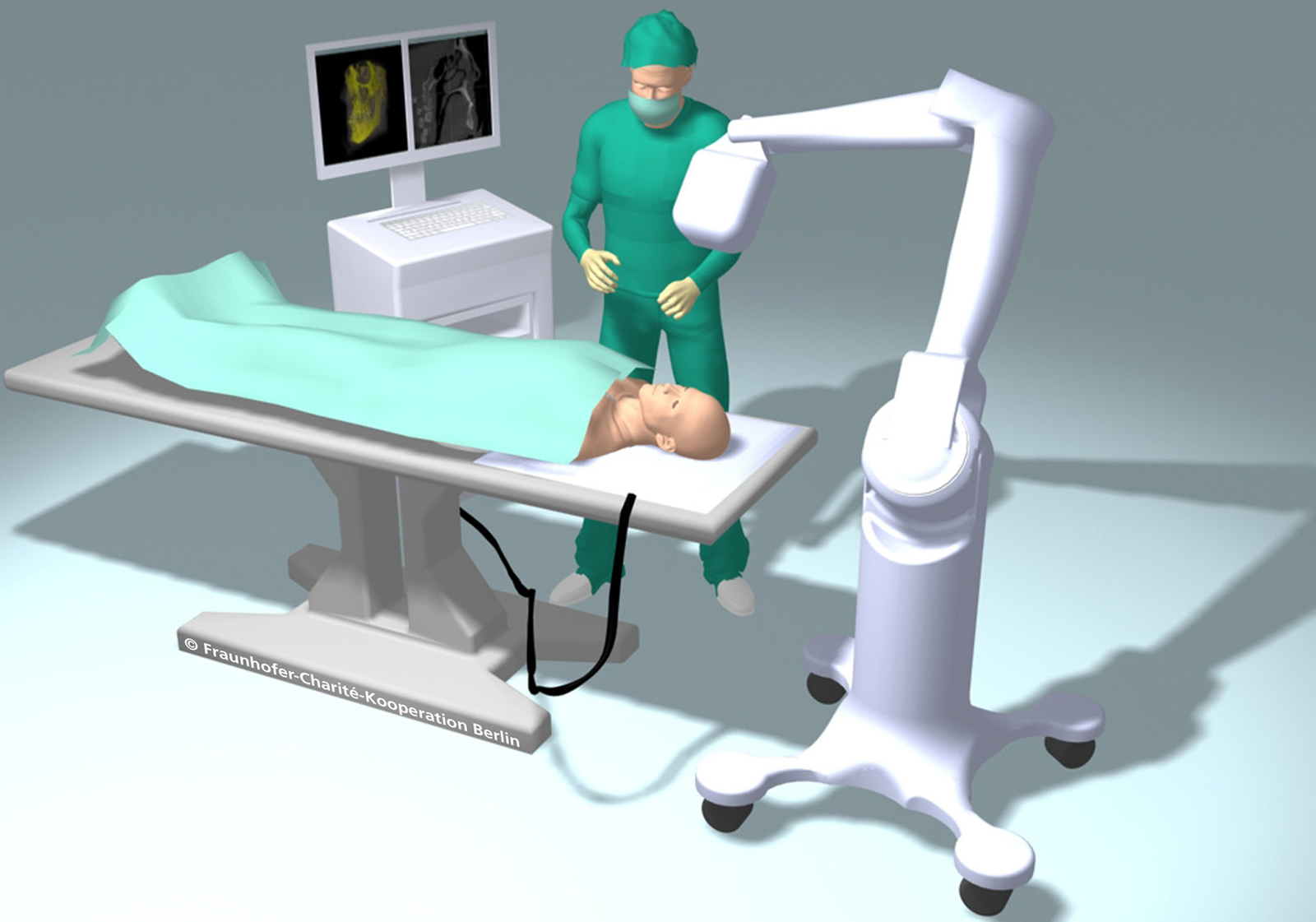Medica 2011
Speedy 3D X-rays in the operating room
Having an operation always places strain on patients, and this is especially true of complicated operations. Surgeons use 3D X-rays to check the results before the patient has left the operating room. This does help to avoid possible complications, but it also means interrupting the surgery. Fraunhofer researchers are now developing a 3D X-ray system that can be integrated seamlessly into operating procedure – with no more forced interruptions. To find out how this system works, visit the Medica 2011 trade fair in Düsseldorf from November 16 to 19 (Hall 10, Booth F05).
Mrs. S. is more than a little anxious: she is due to be given a spinal implant in three days’ time. The elderly lady is worried about complications – and not without reason, since complicated operational procedures such as those on the spine, the head or the ankle are a challenge even for highly experienced surgeons. In order to reduce the risk of complications in more difficult operations and to avoid the need for follow-up surgery, doctors carry out progress checks with the help of three-dimensional X-ray images while the operation is in progress. These 3D images allow them to check on the position of implants and fracture fragments, so as to determine the relative positions of pieces of bone or to position implants with millimeter accuracy. The trouble is, currently available 3D X-ray systems such as C-arms interfere with the surgeon’s work. The X-ray source and detector have to move in circles around the patient, which takes up a lot of space; if the C-arm were installed on the operating table permanently, it would impede access to patients. So the device must be wheeled over to the operating table to capture the images and then moved out of the way again. This is a nuisance – and it takes up time, as it entails an interruption to the surgery.
Researchers at the Fraunhofer Institute for Production Systems and Design Technology IPK are currently working on a solution to this problem. Together with the Charité – Universitätsmedizin Berlin university hospital and Ziehm Imaging GmbH, they are developing ORBIT, a 3D X-ray scanner that can be integrated into operations and does not cause any delays. "Unlike existing three-dimensional imaging procedures, ORBIT doesn’t have to surround the patient to capture images. Instead, it’s an open system in which the X-ray source follows a circular path above the operating table. This makes capturing images much quicker, because it does away with time-consuming preparations," says Professor Dr.-Ing. Erwin Keeve of the Berliner Zentrum für Mechatronische Medizintechnik, a center founded by the IPK and Charité. "It takes about 15 minutes to bring a C-arm into position, record individual projected images of the patient and then convert them into 3D image data. Since X-ray scanning takes less time with ORBIT, it speeds up the overall surgical procedure. Plus it’s an easier system to use, which means doctors will be more inclined to make this diagnostic tool a routine part of their work," Keeve explains. The device has another big advantage: While implants and screws can cause interference in C-arm scans, ORBIT images feature far fewer artifacts caused by these metal objects because its X-ray source and its detector do not move in the same plane. Keeve is happy to report that "our initial experiments have been a success."
Modular system
ORBIT is made up of three modules: There is a maneuverable X-ray source fitted to an articulated bracket. This swivel arm can be attached to the ceiling or mounted on a wheeled stand for mobile applications, but either way the X-ray scans are always carried out from above. There is a digital flat panel detector recessed into the operating table. Finally, there is a monitor – either mobile or wall-mounted – to display the X-ray images. The researchers have already filed a patent application for this system.
Construction of an initial prototype is currently underway and comprehensive testing will begin in 2012. The system is set to be ready for market in three to five years’ time. Those who wish to find out more about ORBIT will have their first chance at Medica 2011 in Düsseldorf.
